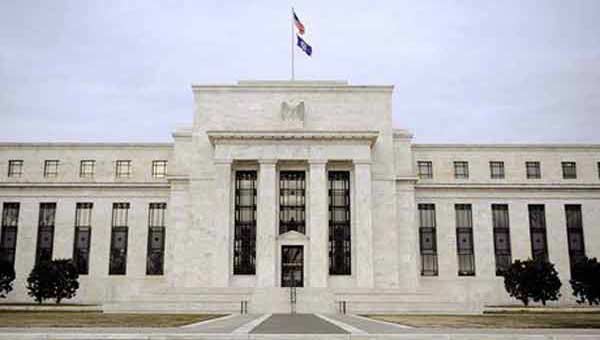
New York, US (BBN) - The US Federal Reserve has raised its benchmark interest rate by 0.25 per cent for only the third time in a decade.
The central bank voted to raise its key rate target to a range of 0.75 per cent to 1 per cent, reports BBC.
The Fed had been expected to raise rates after a robust February jobs report, solid pay gains, rising inflation and a dip in the unemployment rate to 4.7 per cent.
Federal Reserve policymakers are expected to increase rates a total of three times this year.
The Fed aims to keep the cost of lending between banks within a specified band, which it does by buying or selling financial assets.
It is raising that band by a quarter of a per cent.
Fed Chair Janet Yellen said the committee judged that a "modest increase" in the rate was appropriate "in light of the economy's solid progress."
"Even after this increase, monetary policy remains accommodative, thus supporting some further strengthening in the job market, and a sustained return to 2 per cent inflation," she added.
The decision was approved with a 9-1 vote.
Neel Kashkari, the head of the Fed's regional bank in Minneapolis, cast the dissenting vote.
This is the second time the Fed has raised rates in three months.
It signalled that further hikes this year will be gradual.
The Fed's statement said its inflation target was "symmetric," indicating that after a decade of below-target inflation, it could tolerate a quicker pace of price rises.
TRUMP CONFLICT?
Wall Street stock indexes jumped after the announcement, with the Dow Jones Industrial Average closing up 0.5 per cent, 109 points at 20,946.
The US dollar fell about 0.9 per cent against the euro and more than 1 per cent against the pound.
The central bank's outlook for the economy changed little, with officials expecting economic growth of 2.1 per cent for both this year and 2018, before slipping to 1.9 per cent in 2019.
Those forecasts are far below the 4 per cent growth that President Donald Trump has said he can produce with his economic programme.
But Ms Yellen told reporters that she didn't believe it is "a point of conflict" between the Fed and the Trump administration.
"We would certainly welcome stronger economic growth in the context of price stability, and if policies were put in place to speed growth... those would be very welcome changes that we would like to see," she said.
Some economists think the next rate hike will be no earlier than June, given that the Fed probably wants time to assess the likelihood that Congress will pass Trump's ambitious program of tax cuts, deregulation and increased spending on infrastructure.
Analysis: Andrew Walker, BBC economics correspondent
Central banks in the US and Britain both have inflation targets of 2 per cent, while for the European Central Bank the aim is "below but close to" that level.
In all three, the headline inflation rate is there or thereabouts.
And yet among these three it is only the Federal Reserve in the US that has taken the anti-inflation step of raising its interest rates from record lows.
In the UK, the Bank of England expects inflation to rise above the target due to the decline in the pound after the EU referendum. It's reluctant to raise interest rates to fully offset that because of concern about the impact on jobs and economic growth.
In the Eurozone inflation is still quite subdued if you take out energy and food prices which are very volatile.
So no move yet from either - and not looking very likely in the near future.
PLAIN SAILING?
Luke Bartholomew, an investment manager at Aberdeen Asset Management, said the Fed "faces a tricky path from here".
The US economy may turn out to be stronger than expected, leaving the Fed playing catch-up, he said.
"Meanwhile, they're facing increasingly shrill calls for their independence to be curtailed. It's hard to imagine that the rest of this hiking cycle will go off without a hitch," he added.
Kully Samra, UK managing director of Charles Schwab, said there were "a lot of unknowns" about the path of future US rate hikes.
"If White House plans for deregulation, tax cuts and more government spending are realised, then growth and inflation could be stronger than expected and lead to more hikes," he said.
"On the other hand, potential border taxes, trade tariffs and tighter monetary policy could slow growth and inflation," he added.
BBN/SK/AD